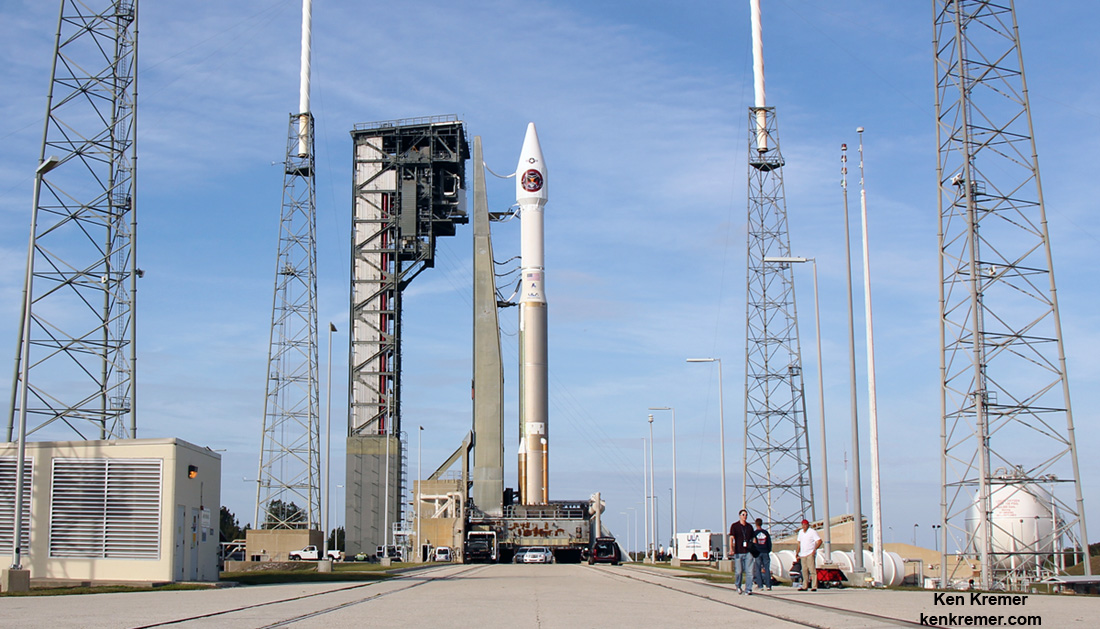
CAPE CANAVERAL AIR FORCE STATION, FL – A U.S. Air Force satellite that will provide vital early warnings on incoming enemy missiles that are critical to the defense of our homeland is set for a spectacular nighttime blastoff on Thursday Jan. 19 from the Florida Space Coast. Update: Launch reset to Jan 20 at 7:42 pm EST
The Atlas V rocket carrying the $1.2 Billion SBIRS GEO Flight 3 infrared imaging satellite counts as the first launch of 2017 by rocket builder United Launch Alliance (ULA) as well as the years first liftoff from Cape Canaveral.
The ULA Atlas V rocket is set for liftoff on Thursday, Jan. 19 from Space Launch Complex-41 at Cape Canaveral Air Force Station in Florida.
The Space Based Infrared System (SBIRS) satellite will be launched to geosynchronous transfer orbit.
It is the third satellite in this series of infrared surveillance satellites that will provide rapid and accurate warning of attacking enemy strategic missiles via infrared signatures – as well as critical targeting data to US missile defense systems to enable swiftly responding launches that will hopefully destroy the attackers in the battle space arena before impacting US cities, infrastructure and military installations.
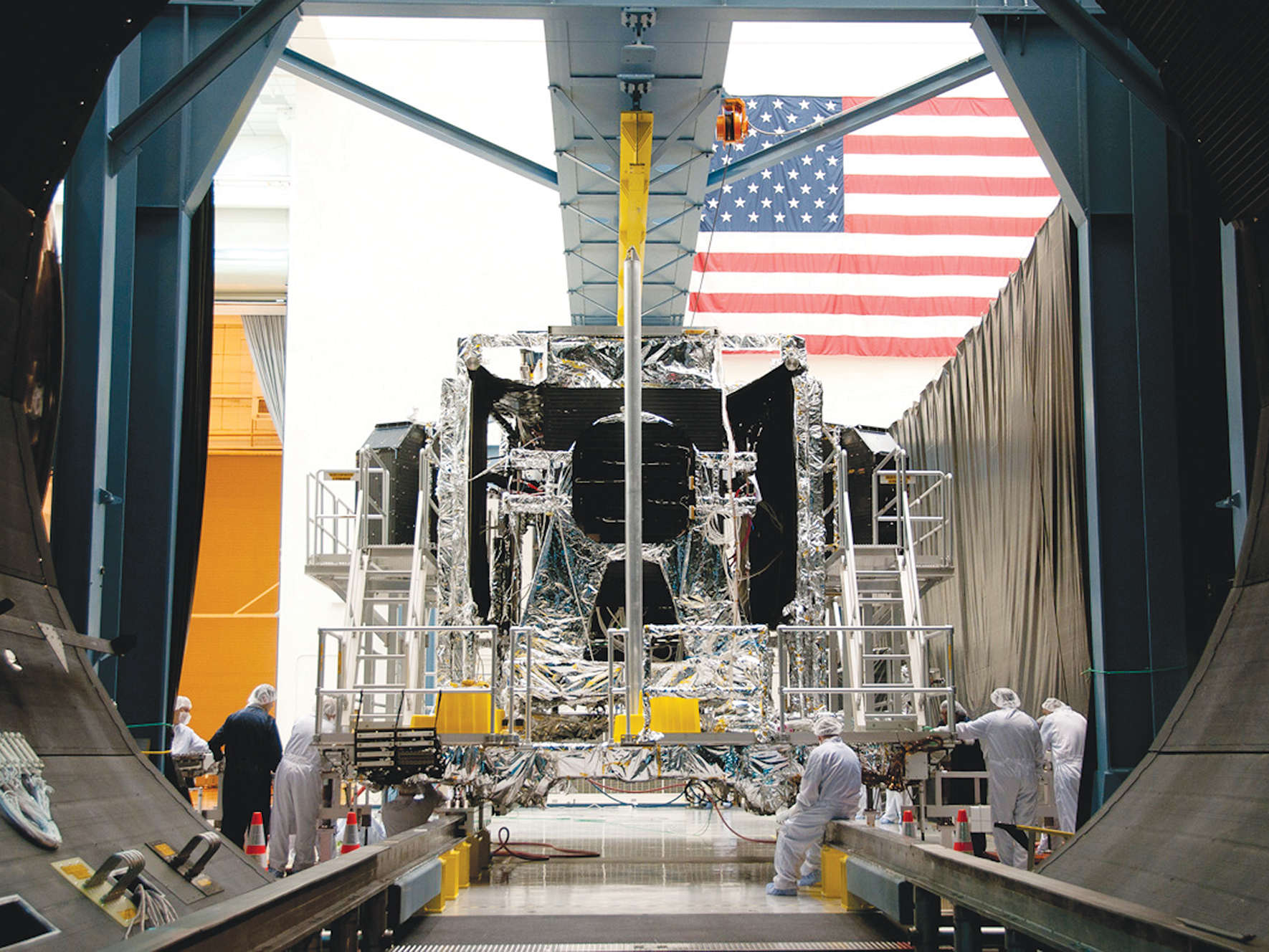
The 20 story tall rocket and payload were rolled out vertically this morning some 1800 feet (600 m) from the Vertical Integration Facility (VIF) processing hangar to pad 41.
With the unpredictable North Korean dictator Kim John Un threatening to launch an upgraded long range intercontinental ballistic missile this year that could potentially strike the United States west coast, SBIRS GEO 3 is more important than ever for our national defense.
The launch window opens at 7:46 p.m. EST (0046 GMT).
The launch window extends for 40 minutes from 7:46-8:26 p.m. EST.
Spectators are flocking into Space Coast area hotels for the super convenient dinnertime blastoff. And they will have a blast ! – if all goes well.
You can watch the Atlas launch live via a ULA webcast. The live launch broadcast will begin about 20 minutes before the planned liftoff at 7:26 p.m. EST here:
http://www.ulalaunch.com/webcast.aspx
www.youtube.com/unitedlaunchalliance and www.ulalaunch.com
The current launch weather forecast for Thursday, Jan. 18, calls for an 80 percent chance of acceptable weather conditions at launch time. The primary concern is for cumulus clouds.
The backup launch opportunity is on Friday.
In case of a scrub for any reason, technical or weather, the chances for a favorable launch drop slightly to 70% GO.
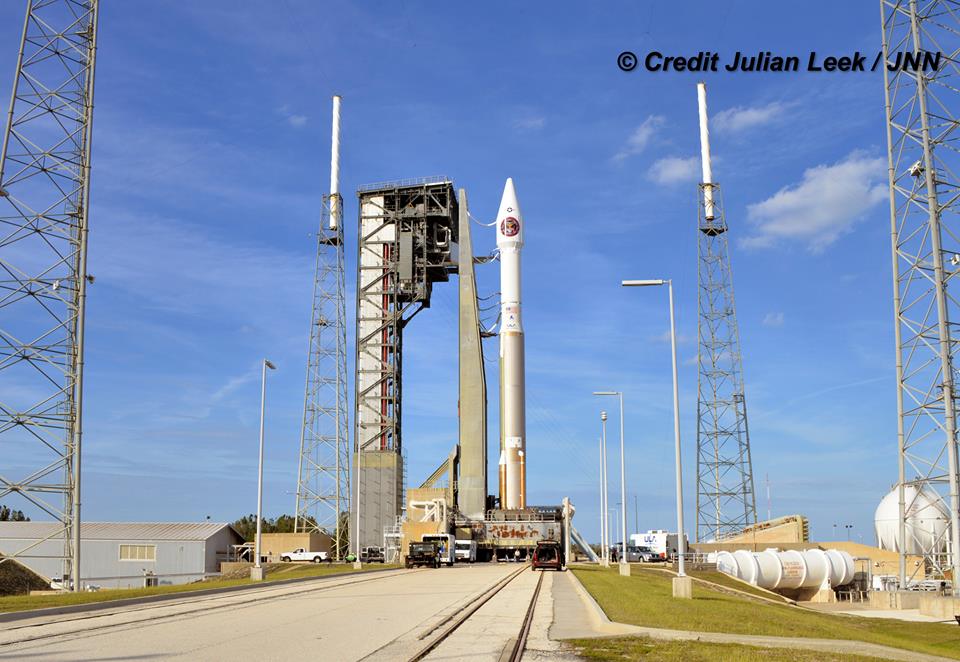
“SBIRS, considered one of the nation’s highest priority space programs, is designed to provide global, persistent, infrared surveillance capabilities to meet 21st century demands in four national security mission areas including: missile warning, missile defense, technical intelligence and battlespace awareness.”
The first SBIRS satellite was launched in 2011.
SBIRS GEO 3 will launch southeast at an inclination of 23.29 degrees. It separate from the 2nd stage 43 minutes after liftoff.
ULA has enjoyed a 100% success rate for this 69th Atlas V launch stretching back to the company’s founding back in 2006.
ULA is a joint venture of Boeing and Lockheed Martin with 116 successful launches under its belt.
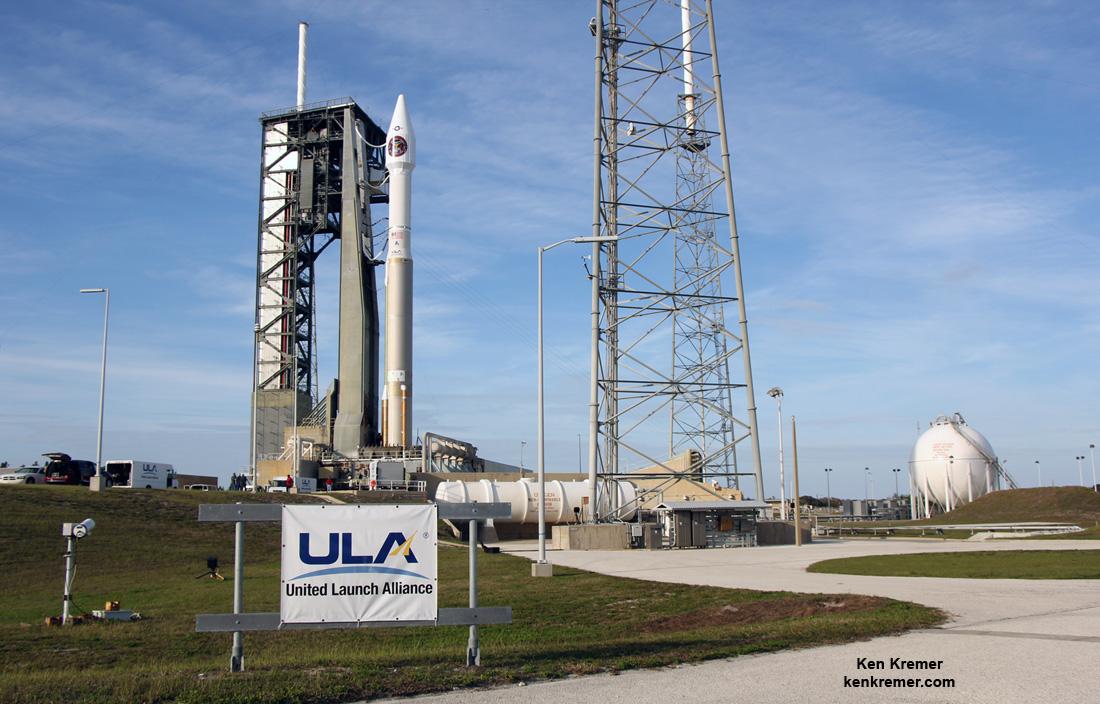
The 194-foot-tall commercial Atlas V booster launched in the 401 rocket configuration with approximately 860,000 pounds of sea level first stage thrust powered by the dual nozzle Russian-built RD AMROSS RD-180 engine. There are no thrust augmenting solids attached to the first stage.
The satellite is housed inside a 4-meter diameter large payload fairing (LPF). The Centaur upper stage is powered by the Aerojet Rocketdyne RL10C engine.
Watch this video showing the detailed mission profile:
Video Caption: An Atlas V 401 configuration rocket will deliver the Air Force’s third Space-Based Infrared System (SBIRS) satellite to orbit. SBIRS, considered one of the nation’s highest priority space programs, is designed to provide global, persistent, infrared surveillance capabilities to meet 21st century demands. Credit: ULA
This mission marks the 34th Atlas V mission in the 401 configuration.
The two prior SBIRS GEO missions also launched on the ULA Atlas V 401 rocket.

The SBIRS team is led by the Remote Sensing Systems Directorate at the U.S. Air Force Space and Missile Systems Center. Lockheed Martin is the prime contractor, with Northrop Grumman as the payload integrator. Air Force Space Command operates the SBIRS system, according to a ULA description.
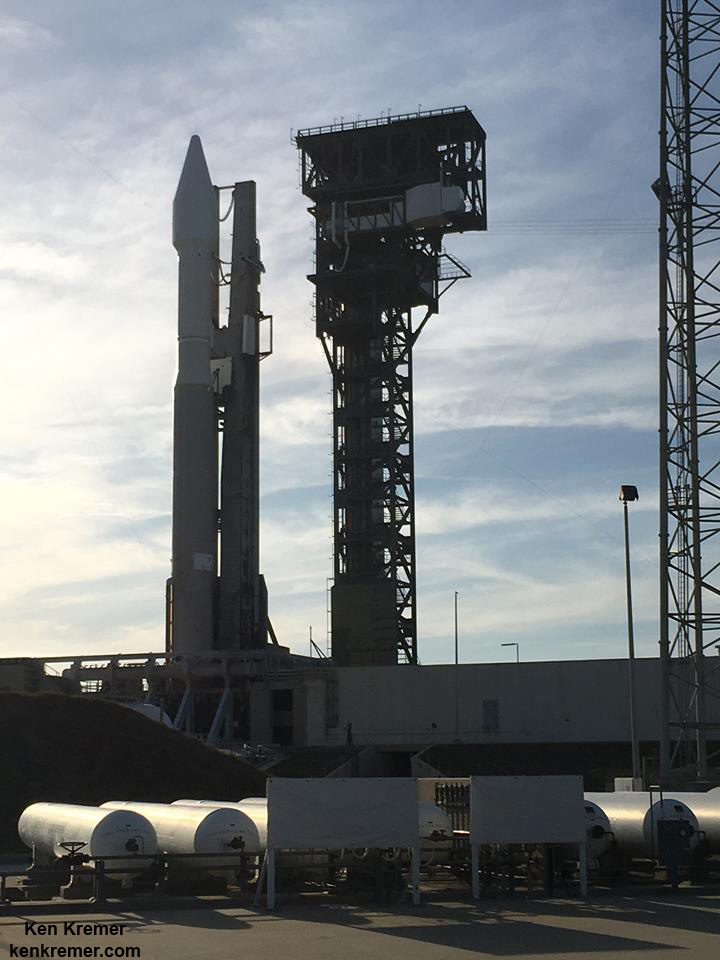
Stay tuned here for Ken’s continuing Earth and Planetary science and human spaceflight news.

………….
Learn more about ULA SBIRS GEO 3 launch, EchoStar launch GOES-R launch, Heroes and Legends at KSCVC, OSIRIS-REx, InSight Mars lander, ULA, SpaceX and Orbital ATK missions, Juno at Jupiter, SpaceX AMOS-6 & CRS-9 rocket launch, ISS, ULA Atlas and Delta rockets, Orbital ATK Cygnus, Boeing, Space Taxis, Mars rovers, Orion, SLS, Antares, NASA missions and more at Ken’s upcoming outreach events:
Jan. 18/20/21: “ULA Atlas SBIRS GEO 3 launch, EchoStar 19 comsat launch, GOES-R weather satellite launch, OSIRIS-Rex, SpaceX and Orbital ATK missions to the ISS, Juno at Jupiter, ULA Delta 4 Heavy spy satellite, SLS, Orion, Commercial crew, Curiosity explores Mars, Pluto and more,” Kennedy Space Center Quality Inn, Titusville, FL, evenings
